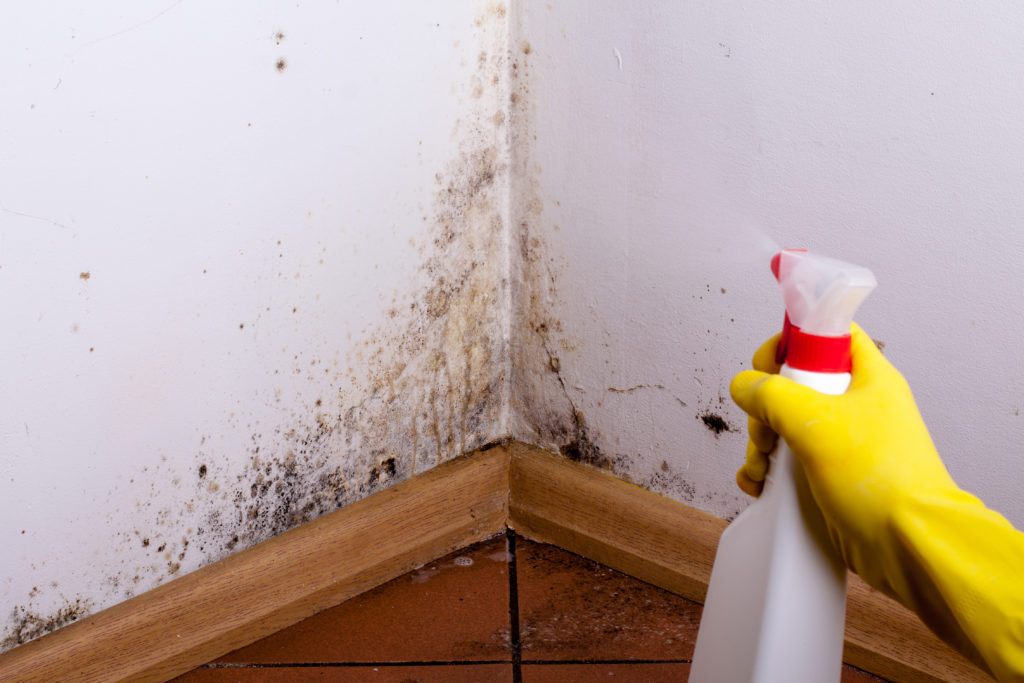Have you been finding mold in your home? Not only does mold mess with the appearance of your home by blackening the grout in your showers, discoloring drywall, and causing black spots on siding, it happens to be a serious problem for your health, especially if you have respiratory conditions, are elderly, or have infants in your home. But, you don’t have to be in these high-risk categories to experience the negative effects of mold, it can have severe effects on even healthy people.
Exposure to mold results in nasal and sinus congestion, coughing and sore throat, tightness in the chest, upper respiratory infections, headaches, inflammation in eyes and skin, asthma, dizziness, and difficulty breathing. For seniors, exposure to mold can be deadly, resulting in hepatic and renal disorders, severe pulmonary disorders, and even cancer. You can prevent yourself from experiencing these negative effects of mold by maintaining clean and dust-free living conditions and proper ventilation.
If you find mold in your home, it’s important to take the right steps to identify and remove it. When left untreated, it can spread and cause more damage. So, how can you detect, get rid of, and prevent mold and should you hire a professional to help you deal with the problem? Continue reading to find out what you should do after you find mold in your home.

Identify the Mold
If your home is experiencing a mold infestation, know that you’re not alone as most homeowners have dealt with it before. The best way to deal with mold remediation is to deal with it before it grows. Mold is everywhere and it can grow almost anywhere that spores land and find moisture and a comfortable temperature.
If your home has a high concentration of mold, it will have a distinguishable musty odor. Check for mold on damp carpets, damp walls, damp crawlspace, and wet wood under your floors and wet roof sheathing. Make sure you immediately clean up these infestations before they have the opportunity to get worse.
Types of Mold
The most visible types of mold, called mildew, are easy to spot and they start off as tiny black spots before they grow into colonies. But mildewed surfaces are sometimes difficult to distinguish from dirty ones and to test for them, dab a few drops of bleach on the blackened area. If it lightens within one to two minutes, it’s mildew and if it remains dark, it’s just dirt. Mildew won’t damage your home’s structure, but other types of mold will. To remove mildew from wood, use a sharp tool, and probe the area. If the wood softens or crumbles, the fungi have started and the wood is rotting.
Removing Mold
For mold on the surfaces of bathrooms, deck, and siding, you can scrub it away with a 1-to-8 bleach/water mold cleaning solution. But, if you need to remove mold concentrations or black mold where there’s a strong odor and extensive water damage, it’s essential that you take special precautions to avoid contaminating the rest of your home and to protect yourself from breathing in the mold.
Safety Precautions
These precautions include wearing the proper gear like clothes you can discard of after use, goggles, gloves, and a special N-95 or P-100 mask. Before you even start, turn off your furnaces and air conditioner and cover the ducts and doors to contain the spores. You also need to use proper ventilation, so buy a cheap fan or use an old fan that you can throw away after you use it and set it up next to a window. As an extra precaution, tape plywood or cardboard around the window openings to prevent the spores from coming back inside.
Clean Up & Repair
Vacuum up the moldy debris with a standard wet/dry vacuum and get an extra-long hose so you can run it out the window to avoid spores from spreading. To kill the mold, scrub the mold stains from the walls and wood trim with a bleach-and-water solution. After allowing the bleach to penetrate the surfaces and dry, wipe it off. Set up dehumidifiers and fans to dry the cleaned area for at least three days and check them for signs of mold. After you’re sure the mold is gone, seal the wood surfaces with a pigmented shellac or an oil-based primer. You can prevent mold from growing in the future by repainting the walls will a regular latex paint that has mildewcide. Your last step is to install new insulation and drywall and to put the trim back on.










